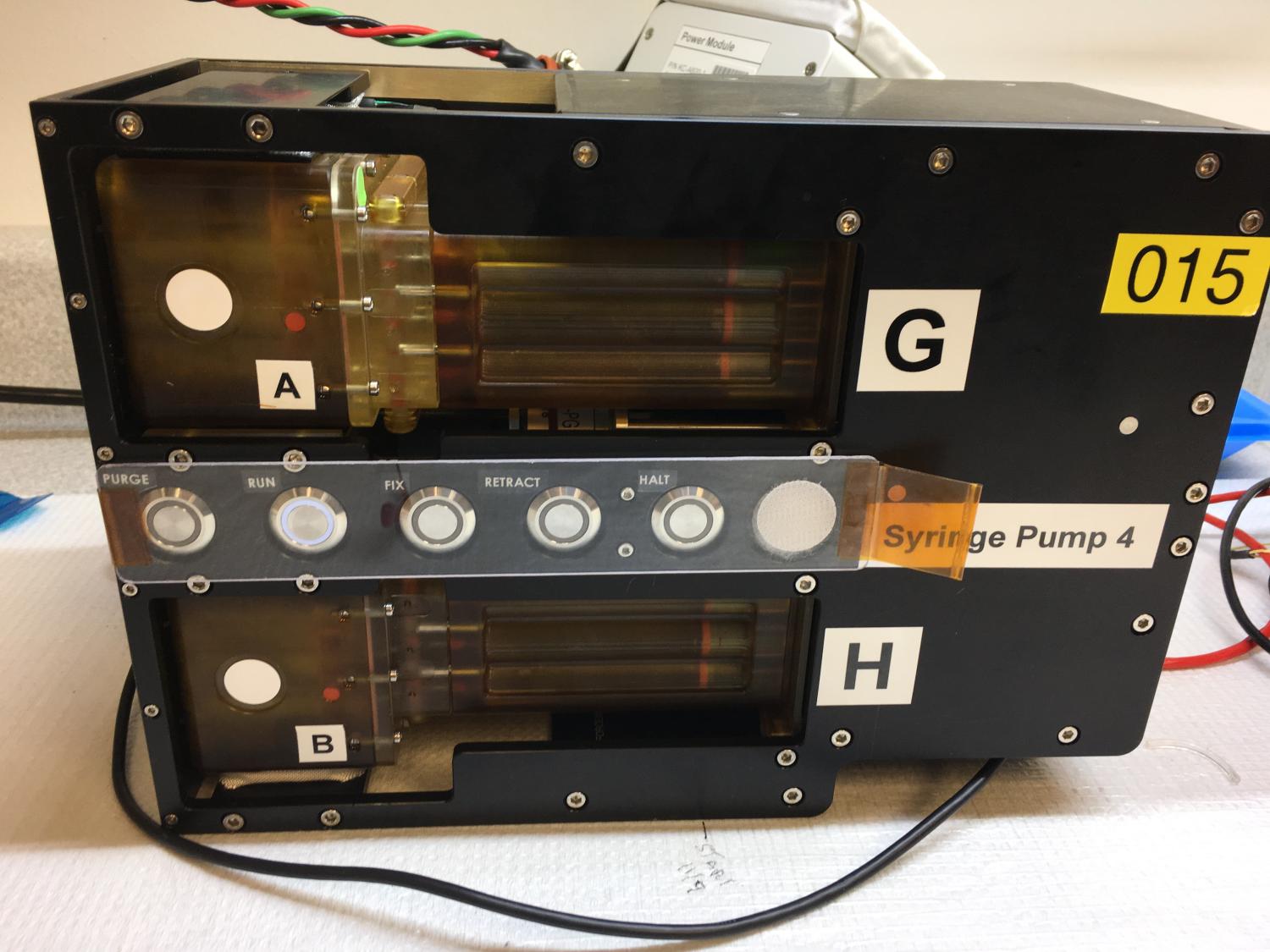
SPOC
Enabling Microgravity Organ-on-Chip Research
The Syringe Pump for Organs-on-Chips (SPOC, also known simply as Syringe Pump) was originally designed to support the NIH-funded Chips in Space initiative. Each SPOC unit accomodates a total of 6 Nortis Triplex MPS chips. Each chip contains three independently perfused biological samples providing a total of 18 samples per SPOC unit. SPOC represents a major effort in miniaturizing laboratory organ-on-chip support hardware and enabling organ-on-chip research to be feasibly performed on ISS.
SPOC continuously supplies the chips with a controlled growth media perfusion to simulate blood flow. Effluent from samples is collected in a sample-specific reservoir allowing for researchers to analyze the chips' output and better understand the metabolic processes occuring in the tissue on the chips. Both the supply and effluent reservoirs are combined into a single "media cassette" that can be swapped during a time course experiment which allows the chips to operate long-term. After being removed, the media cassette can be stored for later analysis of the effluent. The fluid components and concentrations in the media cassettes can be customized on a per-sample basis enabling a wide variety of experiment designs.
SPOC is designed to integrate into SABL, BioServe's next-generation incubator. SABL accomodates up to two SPOC units in addition to an ACM for 5% CO2 incubation. The Module can also be integrated into standard laboratory incubators. Although originally designed to support the Nortis Triplex MPS chip, the integrated chip cassettes were designed as a modular, swappable item. This adaptable design enables SPOC to potentially accomodate other chip designs with minimal modification.
For transit to the ISS, a transit locker is available that supports up to 4 SPOC units.
SPOC was originally designed in 2018 and its first flight was on board SpX-17 in May of 2019.
Features
- Sample-specific media supplies and effluent reservoirs
- Fixation and preservation capability
- Autonomous operation with simple crew controls for media exchange and fixation operations
- Adaptable to other chip types
- Localized heating control to maintain samples at 37.0 °C with minimal thermal gradients
- Typical flow rates from 750 µL/day (for perfusion) up to 1500 µL/day (for fixation).
- Integral data logging throughout mission
- USB bidirectional communication with automated status reporting, file I/O, and commanding capability

SPOC pump module with loaded chip cassettes and media cassettes

SPOC modules running within SABL and the transit locker during an on-site experiment verification test (EVT) at a PI's lab

BioServe graduate research assistant Arthur Barriault standing beside an array of chip and media cassettes being prepared for the Kidney Cell organ on a chip experiment.

